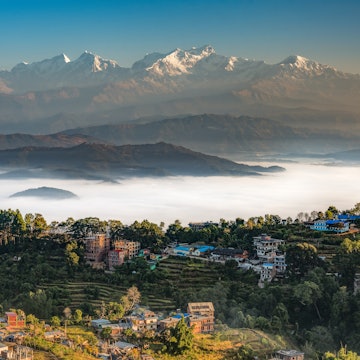

LA's pink wall outside a Paul Smith store is a popular spot with Instagrammers © anouchka / Getty Images
Instagram popularity can be the making of a place: flashbulbs popping all day long; hordes of customers at the tills; hundreds of travellers wanting to visit. But what about the destinations and business owners who don’t want all that attention – or simply can’t cope with the demand? We speak with owners and locals on their unwanted Instagram success.

LA's Paul Smith pink wall
At first, not many people knew that the second-floor of vintage boutique Decades offers an unparalleled view of that iconic LA institution, and Instagram staple, the pink wall outside the Paul Smith store.
From across the world, tourists flock to the wall to take selfie upon selfie against its vibrant exterior. Decades owner Cameron Silver used to watch the tourists himself, gawping at them from the second floor. But then word got out that the Decades boutique offered a good spot to photograph the crush: because if there’s one thing we love about an Instagram tourist landmark, it’s to photograph it from every angle.

"We’ve become a popular viewing deck for people to gawk at the wall," says Silver. "There’s a lot of people taking photos of people taking photos. We thought about doing a steady cam, for people to watch."
You might think that having more people visiting your business would be a good thing, but for the most part Silver is not making money from the wall. "It doesn’t bring in traffic that spends money in the store," he says bluntly. Tourists tramp through Decades, take photos of the wall – and then leave. And there’s another downside too: the garbage. "The sidewalk across the street gets littered with bikes and scooters and trash in general," Silver says. "It can become a bit of a safety concern."
Aescher Hotel in Switzerland
Instagram has revolutionised the ways in which we experience travel. But it’s not always been for the better. If you’re a small business owner who finds themselves under the white-hot glare of Instagram, achieving unexpected popularity through the photo-sharing platform may not always be to the benefit of your business.
Take the long-time managers of Switzerland’s Aescher hotel. One of the oldest mountain guesthouses in the country, the hotel is perched precariously at the base of a tremendous, 100-foot vertical cliff. After celebrities, such as Ashton Kutcher and Roger Federer, made the steep ascent up to the homely guesthouse – which has no running water, and a patchy power supply – it became too much for the managers Bernhard and Nicole Knechtle. Tourists began flocking to the guesthouse in droves. Five guests would share a single portion of food and ask for five extra plates. Drones would wake them up in the morning. "It was crazy," Knechtle told Swiss publication Tagblatt. When contacted by Lonely Planet, the Knechtles declined to give further comment.
Bogle Seeds sunflowers in Ontario
Unwanted visitors descending locust-like on your property can do more than put a strain on hard-working employees – they can actively cause damage. The vibrant sunflowers of Ontario’s Bogle Seeds Dairy Farm have long been favoured by local amateur photographers. But things really got out of hand with the advent of Instagram. Despite welcoming people since 1969, the farm had to shut its doors to visitors last year after too many swamped the site, all looking for that perfect Instagram shot.
"Highway 6 was plugged with 7000 cars," owner Marlene Bogle remembers of the fateful July 2018 weekend where things got out of hand. "No one could move. The police were very upset – so were we. We just don’t want this happening. They destroyed some crops too." It's hard to tell how many crops were destroyed, but it was enough for them to not want tourists to come back for photography on the farm. "Not for pictures, no. It’s okay to come for the wild bird seed and animal produce we sell, but not to take pictures."

When things go well
However, Instagrammers aren’t all bad. "I think we’d have closed about three years ago, were it not for the people who discovered us through social media," says Paddy Screech of London's floating bookshop Word on the Water. He calculates that 20% of his visitors only take photographs and then leave without purchasing anything – there was even a period where he considered charging them to do so. But he’s mellowed over time. "We think of that gentle weather of people coming along, photographing themselves, and carrying on their way, as one of the mainstays of the business."
There’s an upside to the social media platform as well. Silver from Decades laughs as he retells a story about a recent Uber Pool he shared with a couple from mainland China. They were on their way to the wall, to take a picture. Silver used the cab ride to sweet-talk them into visiting Decades – and they bought a Chanel bag. "That was one opportunity I was able to monetise the wall for Decades," he laughs.
And there’s the rub: if you’re going to take a photo at a business and upload it online – at least buy something while you're there.
You might also like:
Top Instagram hotspots in Cairo
The destinations that will be all over your Instagram feed this year















